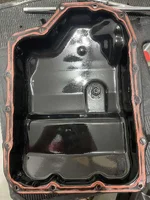90-120 in-lbs is the FSM torque spec for all of the motor/trans oil pans that I've done over the years, and those specs are what I've always used, with no leaks or other issues. IMO it's the large number of bolts (usually 14-18) which provides the holding power - strength in numbers. And I also use an inch torque wrench for these jobs, because most tool makers caution against using the very upper and lower torque settings of their wrench (which 8-10 would be on ft-lb wrenches).
One thing that surprises me is that Mazda doesn't specify multiple passes and a criss-cross sequence pattern for the pan bolts, which I've always considered an important part of these jobs. When the time comes, I'll just go with an inside-out pattern similar to what most of the other automakers use.
Now with all of that said, I'm not someone who tries to push what I do on anyone else, so by all means continue to do whatever you like and has worked well for you.

